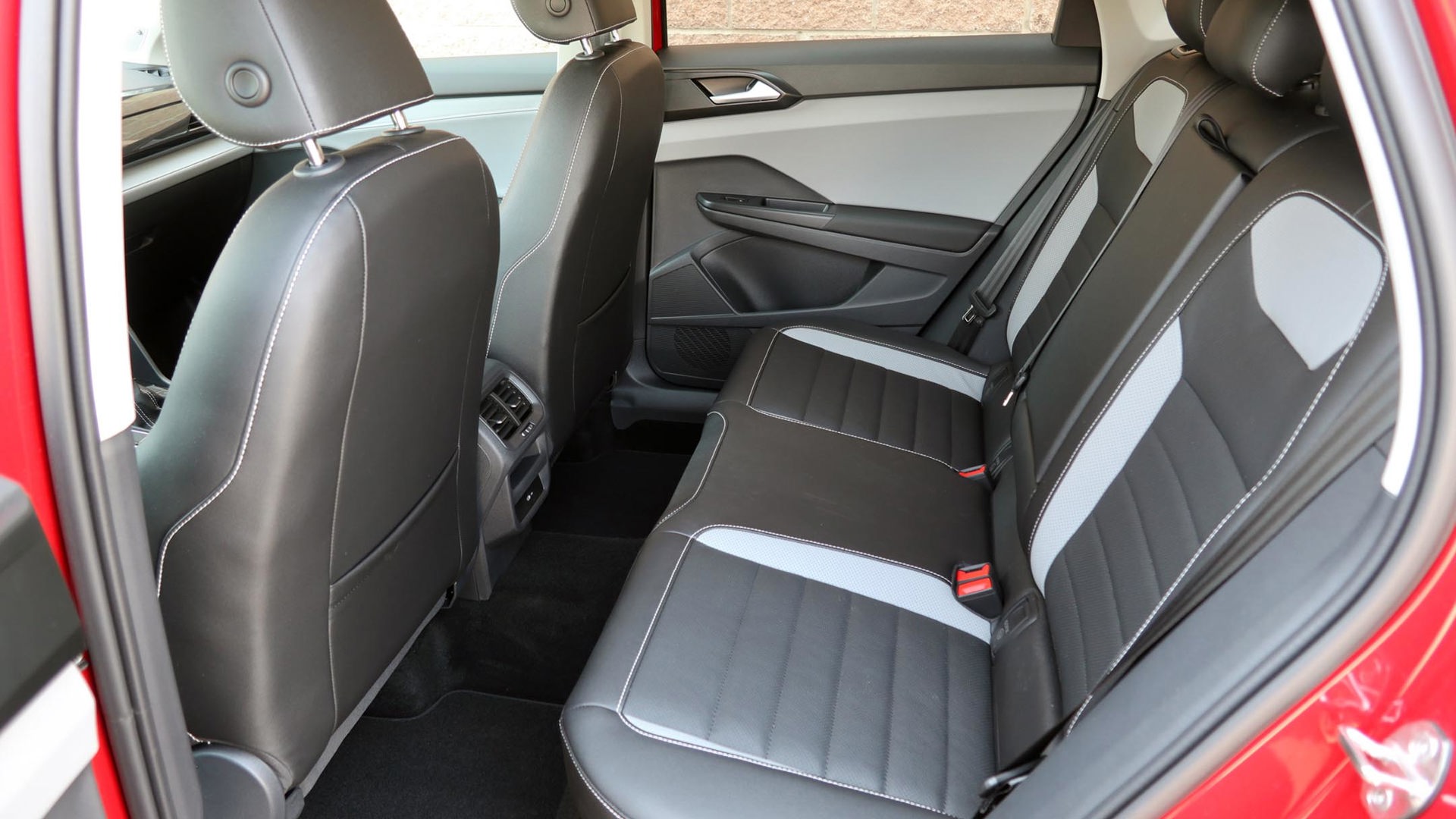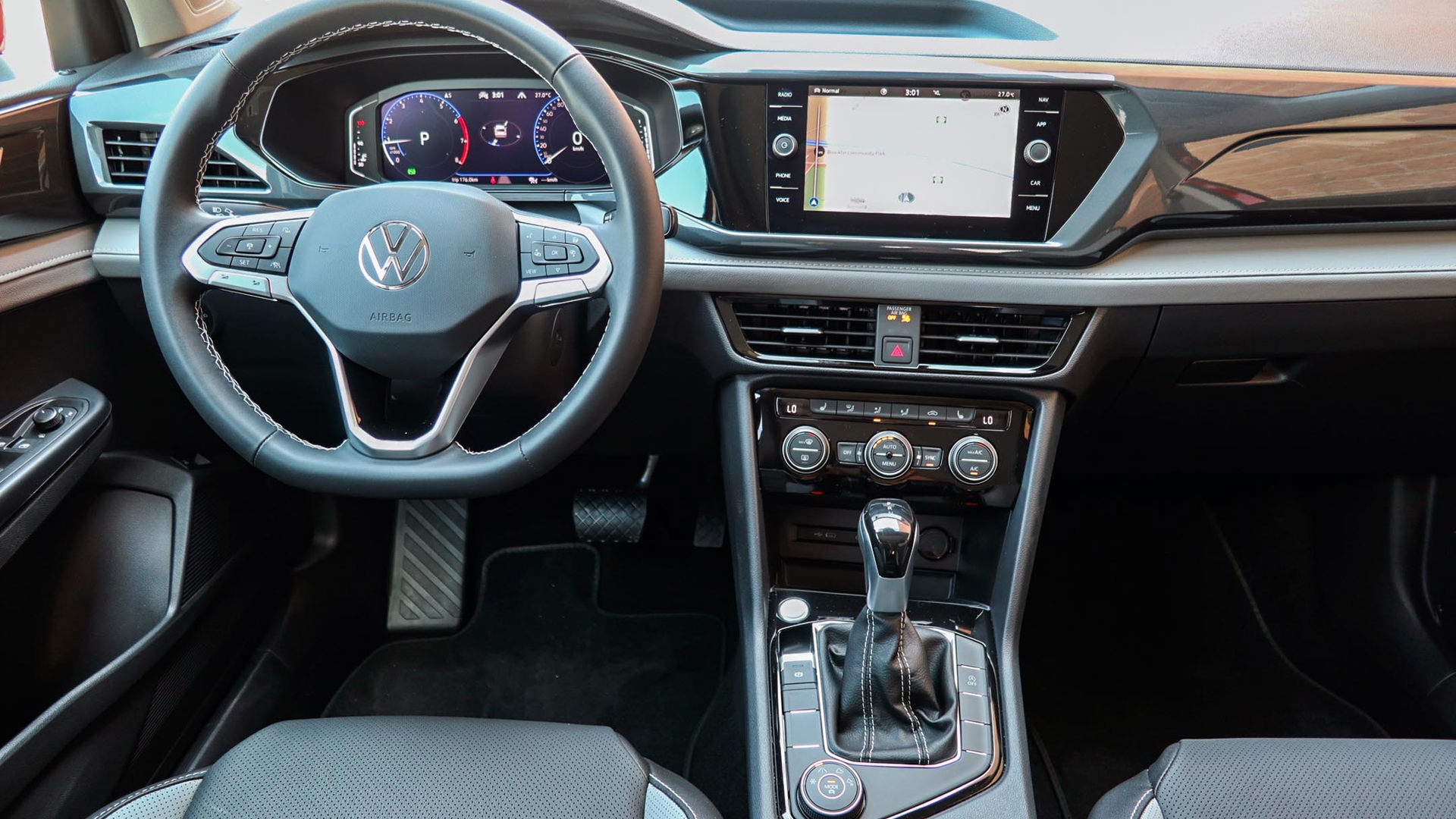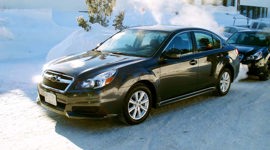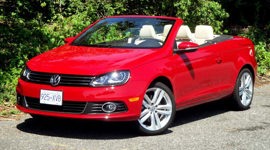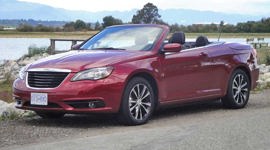 AutoTrader SCORE
AutoTrader SCORE
-
STYLING9/10
-
Safety7/10
-
PRACTICALITY8/10
-
USER-FRIENDLINESS8/10
-
FEATURES8/10
-
POWER8/10
-
COMFORT7/10
-
DRIVING FEEL9/10
-
FUEL ECONOMY8/10
-
VALUE7/10
Introduced last year, the 2023 Volkswagen Taos – it’s pronounced like house – is unchanged save for a few more standard features, including blind-spot monitoring and emergency front braking on all trims.
It’s the smallest of the German automaker’s SUVs, slotting in under the Tiguan. This five-passenger subcompact comes in three trim levels, starting with the Trendline at $29,045, including a non-negotiable delivery fee of $2,050. Both that base version and the mid-range Comfortline come with front-wheel drive (FWD) but can be optioned to all-wheel drive (AWD), which Volkswagen calls 4Motion. The version tested here is the Highline, with standard AWD and a starting price of $39,745. It was further optioned with Kings Red Metallic paint and 19-inch wheels, bringing it to $40,240 before taxes.
Styling: 9/10
The Taos looks much like a shrunken version of the three-row Atlas, tastefully spruced up with just enough chrome to stand out. The two lower trims ride on 17-inch wheels while the Highline gets 18-inch alloys; my tester’s optional 19-inch rims added $500.
Inside, the design is smooth and good-looking, with the centre screen nicely incorporated into the dash, two-tone upholstery, and stitching that adds a handsome accent on the steering wheel, dash, seats, door pads, and gear selector.
Safety: 7.5/10
In crash-testing by the United States National Highway Traffic Safety Administration (NHTSA), the Taos earned four of a possible five stars. In six tests conducted by the Insurance Institute for Highway Safety (IIHS), it scored the top “Good” in four but “Acceptable,” the next step down, for front passenger small overlap crash, and for head restraints and seats in a crash. As of this writing it hadn’t been tested in the IIHS’s updated side and front tests, which better simulate being hit by a large SUV and rear-seat passenger injury, respectively.
All trims include blind-spot monitoring with rear cross-traffic alert and emergency front braking with pedestrian detection, which was optional on the base model last year; along with the rearview camera that’s mandatory on all new vehicles. The Comfortline and Highline trims further add adaptive cruise control, lane-keep assist, and automatic high-beam headlights, all of which were part of an optional package last year.
Features: 8/10
The entry-level Trendline includes such items as LED headlights, a 6.5-inch touchscreen, eight-inch digital instrument cluster, manual air conditioning, manual driver’s seat adjustment, heated cloth seats, a heated steering wheel, Apple CarPlay and Android Auto smartphone connectivity, roof rails, and 17-inch wheels. The Comfortline builds considerably on that with 18-inch wheels, tinted windows, an eight-inch touchscreen, dual-zone climate control, proximity key, emergency call button, remote starter, satellite radio, voice control, wireless Apple CarPlay and Android Auto, a wireless charger, eight-way power driver’s seat, auto-dimming mirror, cargo cover, and leatherette upholstery.
The Highline then builds on the Comfortline with a panoramic sunroof, premium audio system, rear parking sensors, navigation, 10-colour ambient lighting, heated and ventilated leather-clad sport seats, and steering-responsive headlights. However, my tester’s ventilated front chairs were unavailable due to supply-chain issues, and a $300 credit was applied to the sticker price.
User-Friendliness: 8.5/10
Volkswagen has switched some of its updated models to a needlessly finicky system where you tap tiny icons for climate and other functions, but the Taos remains refreshingly simple with its large dials and buttons for temperature, fan speed, airflow, and heated seats. The gear selector is a regular P-R-N-D-L, not an electronic shifter that you push forward to go in reverse, and the drive modes – including snow and off-road – are operated via a dial.
The centre touchscreen includes a volume dial, and most of its icons are easy to use, although some of the navigation’s functions could be a bit more intuitive. You get a full screen until your hand gets close to it, and it senses the proximity and displays the menu icons across the bottom of it.
Practicality: 8/10
The 2023 Volkswagen Taos has a generous 705 L of cargo space – more than competitors such as the Honda HR-V and Toyota Corolla Cross, although 48 L less than the Kia Seltos – and the tailgate opening is wide and low for easier loading. The rear seats fold in a 60/40 split to carry larger cargo, but there’s also a pass-through, so you can take long items such as snowboards and still have two people in the rear seats. Up front, there’s an open bin in the centre console, which holds the wireless charger, along with very large door pockets and a small cubby atop the dash.
Comfort: 7/10
I took the Taos on back-to-back driving days of seven hours each, and discovered that the seats are comfortable for about four hours at a time. That’s an observation and not necessarily a complaint, since most crossovers this size are similar. But whether on suburban cul-de-sacs or multi-lane blacktop, the Taos’s ride is very firm, and you feel every bump. It’s well-planted and very confident on the highway, but it’s very noisy, with considerable road and wind noise making its way into the cabin.
Power: 8/10
All Taos trims use a turbocharged 2.0L four-cylinder engine that makes 158 hp and 184 lb-ft of torque. With FWD models it’s mated to an eight-speed automatic transmission; while with AWD, you get a seven-speed dual-clutch automatic. These units shift into gear and then immediately get the next one ready, so they shift faster and more efficiently.
That 158 hp isn’t the highest among some of its rivals. It beats the Kia Seltos’s base engine at 147 hp and matches the Honda HR-V, while the Toyota Corolla Cross makes 169 hp. But the Volkswagen’s 184 lb-ft of torque – the lower-end grunt that gets the vehicle moving – is far stronger than those, which range from 132 to 150 lb-ft. Only the Seltos’s optional turbocharged engine betters it, at 195 hp and 195 lb-ft.
Driving Feel: 9/10
The Taos has a jumpy throttle that can be hard to modulate when you want to move smoothly and moderately from a stop, but beyond that it’s a great vehicle to pilot. The steering is very responsive and the vehicle is agile, tucking nicely into corners and coming smoothly out of them and ready for the next curve. As small as it is, it drives even smaller – more like a subcompact hatchback than a taller crossover. The AWD primarily powers the front wheels, but can send up to 50 per cent of power to the rear wheels as needed for traction.
The dual-clutch transmission is smooth and adds to the driving experience. These transmissions can occasionally stumble with a bit of a jerk when shifting, especially when you brake hard, regardless of the auto brand. I’d previously driven a 2022 Taos that did this a few times, but I didn’t experience it on this one. However, I did find that the brakes stopped very well but could often feel too grabby.
Fuel Economy: 8/10
The Taos with AWD is rated by Natural Resources Canada (NRCan) at 9.5 L/100 km in the city, 7.3 on the highway, and 8.5 in combined driving. I spent most of my time on highways and came in a decimal point lower than its rating, racking up 7.2 L/100 km.
Its official rating of 8.5 L/100 km is midway with its close AWD rivals, where the Corolla Cross is 7.8; the HR-V is 8.7; and the Seltos is 8.2 with its 2.0L engine and 9.1 L/100 km with its turbocharged version.
Value: 7/10
The Taos starts at $29,045 for the Trendline and $33,445 for the Comfortline, both in FWD; it’s another $2,600 to add AWD. The Highline comes only with AWD and is $39,745.
That’s pricier than many competitors across their FWD and AWD offerings, where the Toyota Corolla Cross is $28,220 to $36,980; and the Kia Seltos with 2.0L engine is $27,095 to $35,395 (it’s $37,695 to $40,295 to get the turbocharged version). The Honda HR-V tops the Taos, though, at $30,960 to $39,910, all prices including delivery.
The Verdict
While the 2023 Volkswagen Taos isn’t necessarily the must-buy in the segment, it’s a contender when you’re cross-shopping subcompact SUVs. It’s a very crowded segment that includes the rivals mentioned above, and then others such as the redesigned Chevrolet Trax, Mazda CX-30, Jeep Compass, Subaru Crosstrek, and more. All of them bring different attributes to the table, but the Taos’s roomy interior and smooth handling make it worthy of consideration.
| Engine Displacement | 1.5L |
|---|---|
| Engine Cylinders | I4 |
| Peak Horsepower | 158 hp @ 5,500 rpm |
| Peak Torque | 184 lb-ft @ 1,750 rpm |
| Fuel Economy | 9.5 / 7.3 / 8.5 L/100 km cty/hwy/cmb |
| Cargo Space | 705 / 1,705 L seats up/down |
| Model Tested | 2023 Volkswagen Taos Highline |
| Base Price | $37,695 |
| A/C Tax | $100 |
| Destination Fee | $2,050 |
| Price as Tested | $40,640 |
|
Optional Equipment
$795 – Kings Red Metallic paint, $295; 19-inch alloy wheels, $500
|
|





